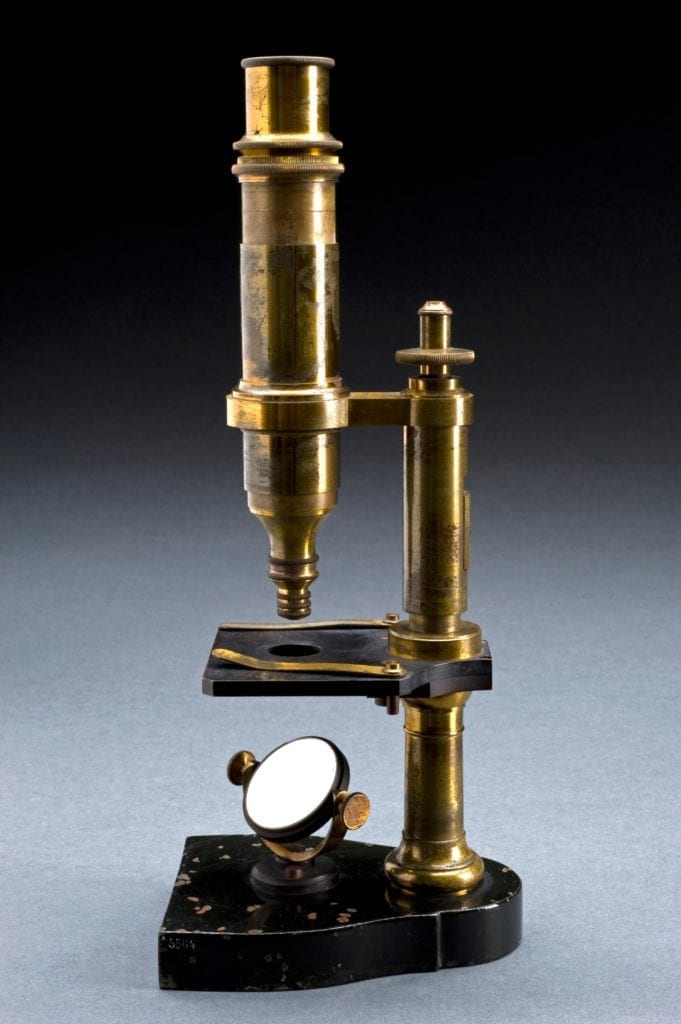Peter Berczeller
Edited by Paul Berczeller

An excerpt from Dr. Peter Berczeller’s memoir, The Little White Coat.
Chicago Med was the poor relation among the medical schools ringing Cook County Hospital. The sooty three-story building was dwarfed by the high rises of the Rush and Illinois medical schools close by. Though its building was no taller than ours, Loyola, a Catholic institution next door, was imposing in its own way; the huge cross over the main door and the stained glass windows illuminating the lobby gave it the look of a prosperous rectory.
When I visited Chicago Med for my interview the halls had been dark and quiet, with no students to be seen. Now, on the first day of school, the “campus” (two postage-sized pieces of scrubby lawn on either side of the entrance) was filled with dozens of students. It was easy to tell who the freshmen were. Not only did we have that dazed, anxious look—holy shit, what’s going to happen to me?—but we could also be identified by the large wooden box each of us was carrying in a gingerly way, afraid to bump or shake its precious contents. These were the microscopes the school had warned us to bring as early as the first day of orientation. At the first formal meeting of my class in Amphitheatre A (an architectural throwback to an earlier era of teaching) they were pulled out of their captivity early on; as if they needed an urgent airing after the long trip to Chicago before being shown off proudly by their owners.
I did not keep my museum piece for long. Reluctant as I was, I had to give it the light of day in our first lab, embryology. The teacher, a spare, white-haired gentleman with a thick Russian accent, was known for an experiment he had been conducting for years. It seemed he had the wacky idea that smoking causes lung cancer, so his office was filled with cages of rats which were ventilated with cigarette smoke. He was also obsessive on the subject of microscopes. That initial session in his lab was dedicated to checking out each of our instruments for clarity of vision and adequate magnification. His inspection reminded me of the movies about Marine boot camp, where the drill sergeant checks for specks of dust on a recruit’s gun or a smudge on his belt buckle.
Logan’s Bookstore was around the corner from the school, across the street from the Congress Expressway that was being built at the time. I had seen a few microscopes languishing about when I went there to buy my textbooks, so I rushed back there now, desperately hoping to make a deal. I knew I could not expect any extra money from home, but scuttlebutt had it that Shirley, the Logans’ daughter, was the one to do business with. A flat-chested girl in her mid-twenties with thick glasses and acne scars on her face, she had already been on display for generations of medical students; no takers, ever. I went for the pity angle and, after a bit of haggling, she took an older Bausch and Lomb down from a dusty shelf—it was monocular, but what could I expect for the pittance I would be paying?—which she had just bought from one of the graduating seniors. She was willing to let me have it for $100, and take my ancient German scope as a $25 down payment. After that, I could pay in installments of $5 a month for the next 15 months. I could have kissed her—pimples and all—but I restrained myself and just kept pumping her hand up and down, thanking her profusely all along.
Marge was the only girl in our class, tall, with thick glasses, wearing a crew-neck sweater with a dickey collar and a long pleated skirt. She told me that her biggest problem at the beginning was not how to deal with her seventy-four male classmates, but in finding a bathroom she could use. The male locker room was in the basement; weak bulbs barely illuminated the dark space and the smell of drains was always in the air. For all we knew, patients might have been kept down there in the old days when the building was a hospital before it was a struggling medical school. Marge turned out to enjoy much better facilities. The only other woman in the building was the executive assistant to the Dean: square cut glasses, a no-nonsense look about her. Marge lucked out that the Dean and his assistant had an elegant bathroom all to themselves, and the addition of Marge made it a menage a trois.
PETER H. BERCZELLER, MD, was born in Vienna, Austria in 1931. He attended The Chicago Medical School and received his MD there in 1956. He was a practicing internist from 1960 to 1992, at which time retired from private practice. He was also on the Attending Staff at New York University Medical Center and Clinical Professor of Medicine at New York University School of Medicine for many years. In addition to multiple contributions to the medical literature, he is the author of several books dealing with medicine and one novel. His 1994 book, Doctors and Patients: What We Feel About You was released by Simon and Schuster. He lived in the Dordogne, in France.
PAUL BERCZELLER, son of Dr. Peter Berczeller, edited and reviewed this piece.

Leave a Reply